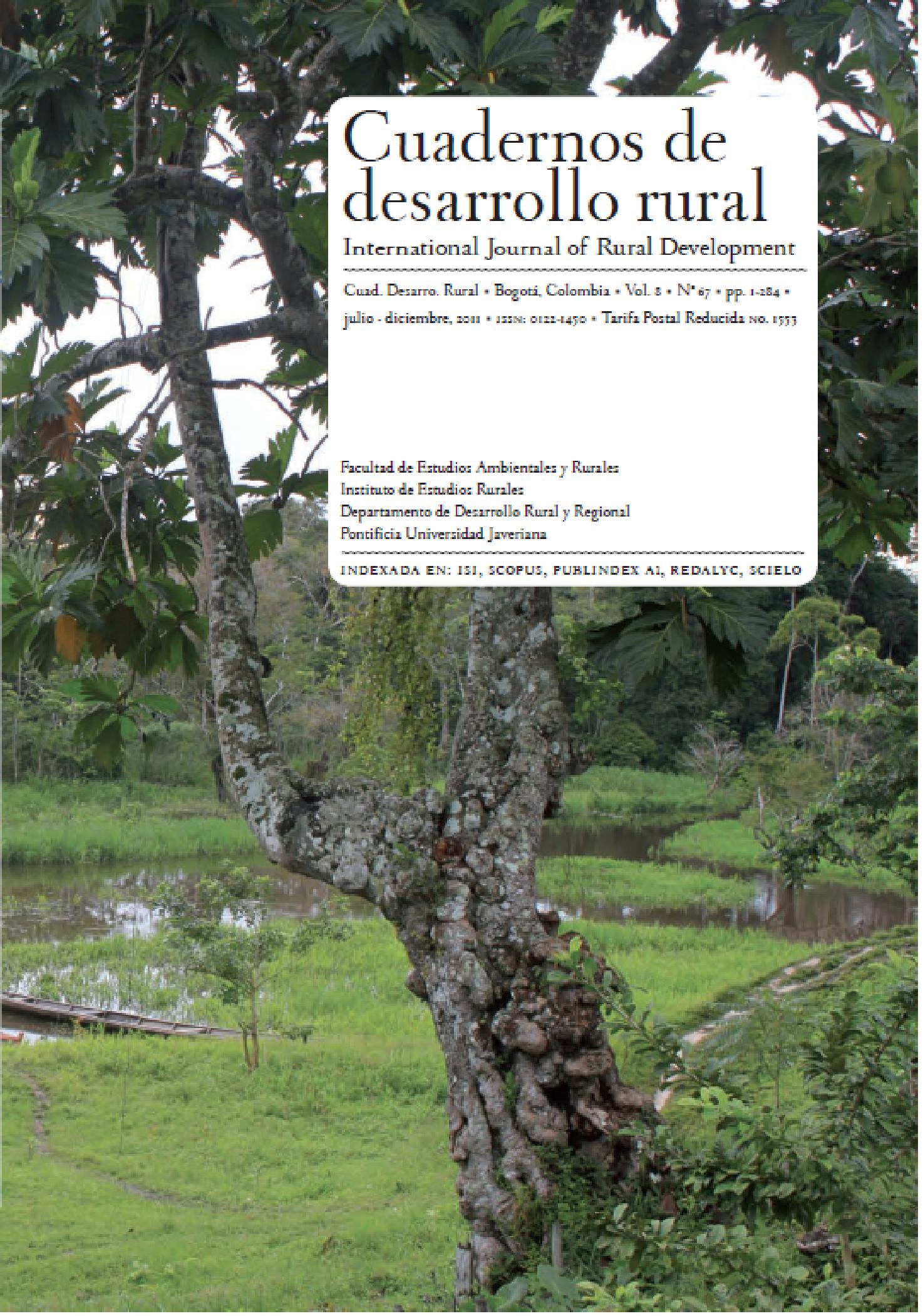Abstract
La aparcería presenta una amplia distribución espacial y temporal y ha sido ampliamente estudiada, atacada y defendida por numerosos autores. Este artículo presenta evidencias de procesos de evolución de la aparcería a sistemas que se asemejan a sociedades de producción agrícola. El cultivo de arracacha en Cajamarca, Colombia, se hace casi exclusivamente mediante arreglos de aparcería. Se estudian las tres modalidades encontradas: “a la quinta”, que se asemeja a la definición tradicional de aparcería, y dos sistemas novedosos llamados “con ayuda” y “en derecha”, en los que el propietario de la tierra y el aparcero operan como socios que comparten riesgos, inversiones e ingresos en el cultivo. Los costos de producción del cultivo de arracacha y la distribución de las inversiones y rentabilidades por parte de cada uno de los agentes, así como sus motivaciones, se estudian para el período comprendido entre los años 2006 y 2010.Cuadernos de Desarrollo Ruralis registered under a Creative Commons Attribution 4.0 International Public License. Thus, this work may be reproduced, distributed, and publicly shared in digital format, as long as the names of the authors and Pontificia Universidad Javeriana are acknowledged. Others are allowed to quote, adapt, transform, auto-archive, republish, and create based on this material, for any purpose (even commercial ones), provided the authorship is duly acknowledged, a link to the original work is provided, and it is specified if changes have been made. Pontificia Universidad Javeriana does not hold the rights of published works and the authors are solely responsible for the contents of their works; they keep the moral, intellectual, privacy, and publicity rights.
Approving the intervention of the work (review, copy-editing, translation, layout) and the following outreach, are granted through an use license and not through an assignment of rights. This means the journal and Pontificia Universidad Javeriana cannot be held responsible for any ethical malpractice by the authors. As a consequence of the protection granted by the use license, the journal is not required to publish recantations or modify information already published, unless the errata stems from the editorial management process. Publishing contents in this journal does not generate royalties for contributors.


